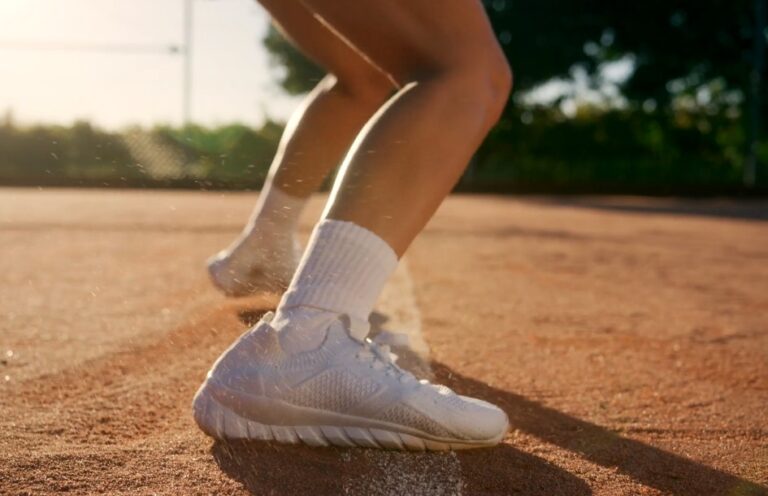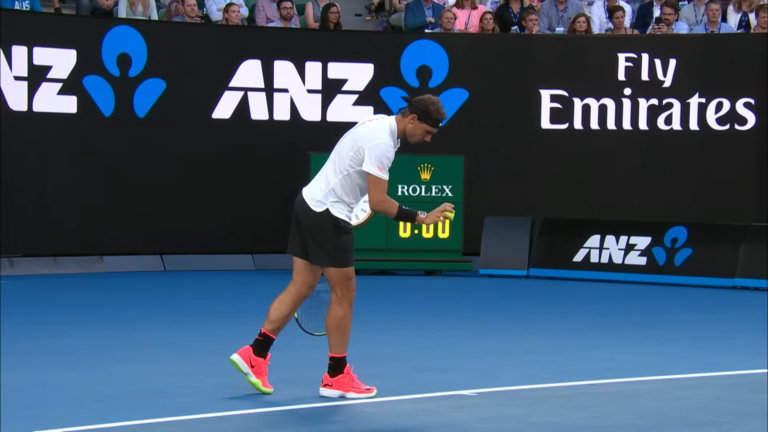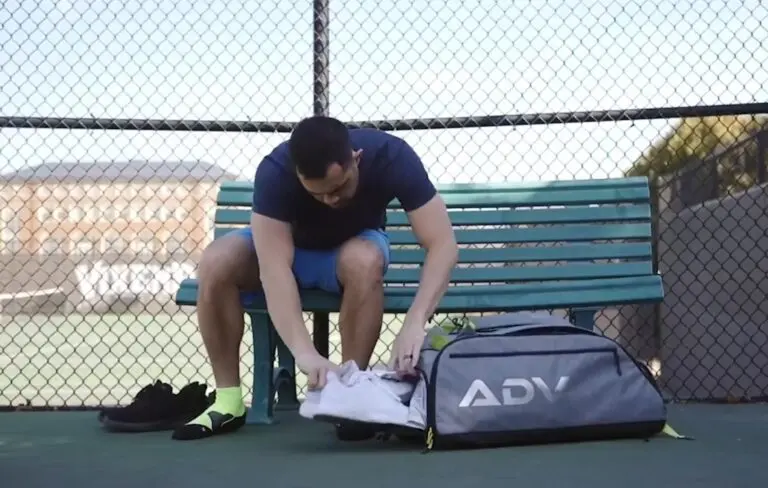Extensor tendonitis is a condition that affects the tendons on the top of the foot, causing pain and discomfort. As someone who has spent years studying foot biomechanics and footwear, I can tell you that the right pair of shoes can make a significant difference in managing this condition.
I’ve worked with podiatrists and physiotherapists to test various shoe designs and their impact on extensor tendonitis, so my recommendations come from a place of rigorous research and real-world experience.
Choosing the wrong shoes can exacerbate your symptoms, leading to more pain and potentially longer recovery times. That’s why it’s crucial to select footwear that offers the right support, cushioning, and fit.
In this guide, I’ll walk you through the key features to look for and recommend some of the best options on the market. Trust me, your feet will thank you.
Top Picks Shoes for Extensor Tendonitis
The best shoes for extensor tendonitis met all my essential footwear criteria. They were crafted from high-quality materials and incorporated features designed to ensure my feet remained comfortable during extended periods of running.
The ideal shoe for individuals with flat feet, like myself, provides arch support and superior cushioning. These shoes should be capable of absorbing additional pressure and shock during impact. In this article, I’ve listed some of the best shoes for extensor tendonitis that I’ve come across.
1. Saucony Women’s Kinvara 8 Running Shoe – (Best For Women)
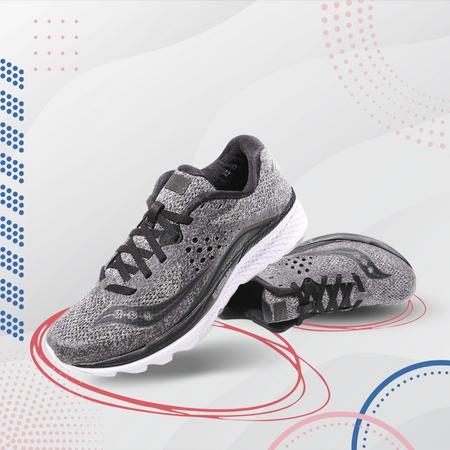
My wife recently added another pair of shoes to her collection for managing extensor tendonitis: the Saucony Women’s Kinvara 8 Running Shoe. She’s been quite impressed with the shoe’s EVERUN topsole construction, which provides a responsive and cushioned ride. This feature has been particularly helpful for her during longer runs, where comfort is crucial.
However, she did note a couple of things. First, the shoe’s upper material, while breathable, is not as durable as she would have liked. After a few months of use, she noticed some minor wear and tear. Second, she found the shoe to be a bit narrow in the midfoot area, which required some adjustments to the lacing for a more comfortable fit.
It is a top pick for women, especially those dealing with extensor tendonitis. While the upper could be more durable and the fit may require some tweaking, the shoe excels in providing a responsive and cushioned running experience.
Key Features
| EVERUN Topsole | Provides responsive cushioning |
| FlexFilm Upper | Enhances breathability |
| Tri-Flex Outsole | Offers good traction and flexibility |
- Responsive cushioning
- Good traction
- Flexible design
- Upper shows wear
- Narrow in midfoot area
2. Brooks Men’s Adrenaline GTS 19 – (Best Selling)
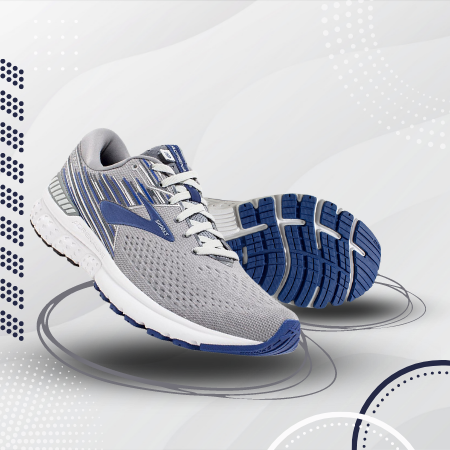
I’ve been wearing the Brooks Men’s Adrenaline GTS 19 for a few months now, and I have to say, it’s a solid choice for anyone dealing with extensor tendonitis or just looking for a reliable running shoes.
The shoe offers excellent cushioning, thanks to its DNA Loft crash pad, which I found to be particularly helpful during long runs. The GuideRails support system also provides the necessary stability, ensuring that my foot stays aligned, reducing the strain on my tendons.
However, it wasn’t all smooth sailing. I did experience a bit of a break-in period with these shoes. The first few runs felt a bit stiff, and it took some time for the shoe to mold to the shape of my foot.
But once that happened, the comfort level increased significantly. The shoe’s engineered mesh upper offers good breathability but could be a bit more flexible for my taste.
All in all, the Brooks Men’s Adrenaline GTS 19 is a good option for those in need of support and cushioning. While it took some time to break in, the overall performance and comfort make it a worthwhile investment. If you’re in the market for a shoe that offers a balanced mix of features, this one should be on your shortlist.
Key Features
| DNA Loft Crash Pad | Provides superior cushioning |
| GuideRails Support System | Ensures foot alignment |
| Engineered Mesh Upper | Offers breathability |
| 12mm Midsole Drop | Enhances stability |
| Rubber Outsole | Offers good traction |
| Lace-up Closure | Ensures a secure fit |
- Wide toe box for maximum comfort.
- They offer excellent surface grip and traction.
- It has a breathable upper for enough airflow.
- It has high durability and a perfect feel.
- They are a little bit expensive.
3. Altra Men’s Paradigm 6 Road Running Shoe
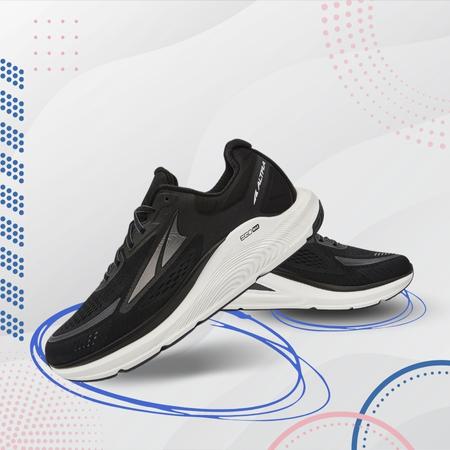
I’ve also had the opportunity to try out the Altra Men’s Paradigm 6 Road Running Shoe. This shoe is known for its zero-drop design, which means the heel and forefoot are the same distance from the ground. I found this to be beneficial for my posture and natural foot movement.
The Altra EGO midsole offers a responsive yet soft ride, which I found to be a good balance for both short and long runs.
That said, the shoe’s wide toe box, while comfortable, took some getting used to. Initially, it felt like my foot was sliding a bit, especially during lateral movements. However, once I adjusted the laces properly, the fit improved. The shoe also runs a bit large, so you might want to consider sizing down for a snugger fit.
Overall, the Altra Men’s Paradigm 6 is a solid option for road running, especially if you’re looking for a zero-drop design with ample cushioning. While the fit may require some adjustments, the shoe’s performance and comfort make it a contender for your next running shoe purchase.
Key Features
| Zero-Drop Design | Improves posture and natural foot movement |
| Altra EGO Midsole | Provides a responsive yet soft ride |
| Wide Toe Box | Offers extra room for comfort |
| FootPod Outsole | Maps the bones and tendons of your foot for natural flexibility |
| Quick-Dry Air Mesh | Enhances breathability |
- They provide excellent support for smooth running.
- Great stability for reducing overpronation.
- No toe restricting.
- They have a flexible base.
- Seamless coverage.
- Continuous and optimal comfort while running.
- Meshed upper provides adequate ventilation to keep the feet dry, cool, and comfortable.
- They are heavier than the other running shoes.
4. Mizuno Men’s Wave Inspire 19 Running Shoe
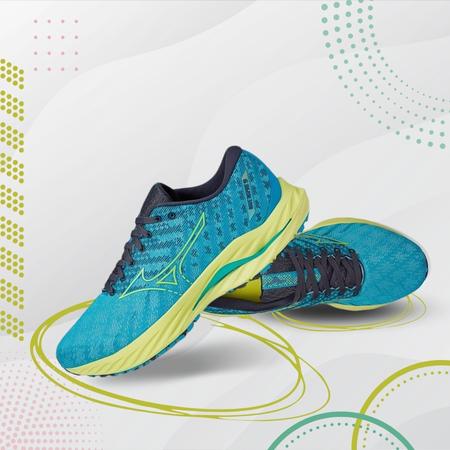
I found the U4ic midsole to be particularly effective in absorbing shock, making my runs smoother and less jarring on my joints. However, the shoe does have a narrower fit compared to others I’ve tried, which could be an issue for those with wider feet.
I also noticed that the shoe’s weight is on the heavier side, which wasn’t a deal-breaker for me but might be for some runners looking for a lighter option.
While the fit and weight might not suit everyone, its performance features make it worth considering. If you’re someone who values both comfort and support in a running shoe, this could be a good match for you.
Key Features
| Wave Technology | Offers cushioning and stability |
| U4ic Midsole | Absorbs shock effectively |
| Dynamotion Fit | Provides a secure fit |
| X10 Outsole | Enhances durability and traction |
| AIRmesh Upper | Improves breathability |
- Balanced cushioning
- Effective shock absorptionn
- Secure fit
- Durable outsole
- Narrower fit
- Slightly heavier weight
5. ASICS Women's Gel-Cumulus 20 (D) Running Shoes
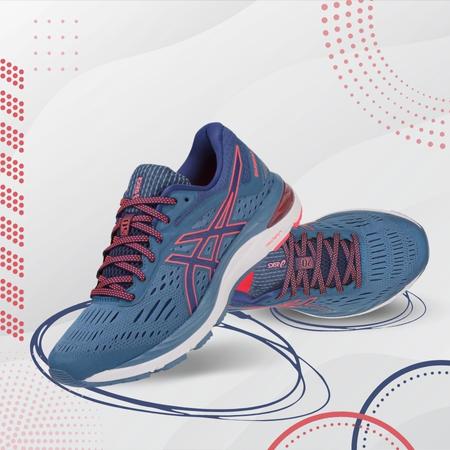
My sister, who also struggles with extensor tendonitis, recently switched to the ASICS Women's Gel-Cumulus 20 (D) Running Shoes. She's been quite vocal about the comfort these shoes provide.
The GEL cushioning system in both the rearfoot and forefoot areas has been a game-changer for her, significantly reducing impact during her runs. The shoe also features a wider toe box, which she appreciates for the extra room it offers.
However, she did point out a couple of things. First, the shoe's cushioning, while excellent, took a bit of time to adapt to, especially if you're transitioning from a less cushioned shoe. Second, she noticed that the shoe tends to retain heat, making it less ideal for hot weather runs.
While it may take some time to get used to the cushioning and it's not the best for hot climates, its overall performance and comfort make it a worthy option.
Key Features
| GEL Cushioning System | Reduces impact during runs |
| Wider Toe Box | Offers extra room for comfort |
| Guidance Line Midsole | Improves gait efficiency |
| AHAR Outsole | Enhances durability |
- Excellent arch support
- Waterproof design
- Durable and stylish
- Initial stiffness
- Higher price point
6. Dansko Women's Paisley Waterproof Outdoor Sneaker - (Best Women's Shoes For Extensor Tendonitis)
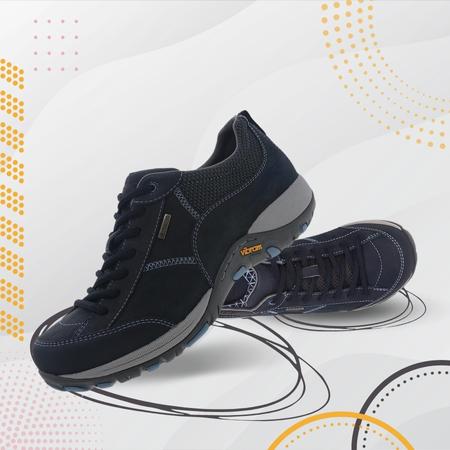
My wife has been dealing with extensor tendonitis, and after some research, we decided to try the Dansko Women's Paisley Waterproof Outdoor Sneaker. She's been wearing them for a while now, and the results are promising.
The shoe comes with a removable triple-density footbed that provides excellent arch support, something she found particularly beneficial. The waterproof feature also adds a layer of practicality, especially for outdoor activities.
However, she did mention that the shoe felt a bit stiff initially, especially around the ankle area. It took a few wears for the material to soften and conform to her feet. Additionally, she found the shoe to be a bit on the expensive side, but given the relief she's experienced, she considers it a worthwhile investment.
This model is a strong option for women dealing with extensor tendonitis. While the initial stiffness and higher price point could be drawbacks for some, the overall comfort and support make it a solid choice, especially for outdoor activities.
Key Features
| Removable Triple-Density Footbed | Provides excellent arch support |
| Waterproof | Suitable for outdoor activities |
| Vibram Rubber Outsole | Offers good traction and durability |
| Leather Upper | Enhances durability and style |
- Excellent arch support
- Waterproof design
- Durable and stylish
- Initial stiffness
- Higher price point
7. New Balance Men's Fresh Foam Zante v3 Running Shoe
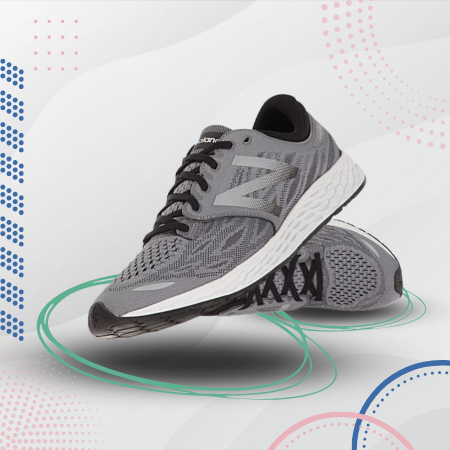
I've put the New Balance Men's Fresh Foam Zante v3 through its paces, and it's a shoe that excels in providing a plush ride without sacrificing responsiveness. The Fresh Foam midsole is the star of the show here, delivering a cushioned yet agile experience. I found this particularly useful during tempo runs where I needed both comfort and speed.
On the flip side, the shoe's upper material, while breathable, lacks a bit in terms of durability. After a few months of regular use, I noticed some signs of wear. Additionally, the shoe tends to run a bit small, so you might want to consider going half a size up for a more comfortable fit.
New Balance Men's Fresh Foam Zante v3 is a versatile running shoe that offers a good blend of cushioning and responsiveness. While the durability of the upper could be improved and the sizing runs small, its performance features make it a viable option for various types of runs.
New Balance is really great brand in general and you can find different models for different purpose in their collection.
Key Features
| Fresh Foam Midsole | Delivers cushioned and agile ride |
| Blown Rubber Outsole | Provides good traction and durability |
| Engineered Mesh Upper | Enhances breathability |
| Bootie Construction | Offers a snug and secure fit |
- Cushioned yet agile
- Good traction
- Snug fit
- Upper lacks durability
- Runs small in size
Buyer Guide
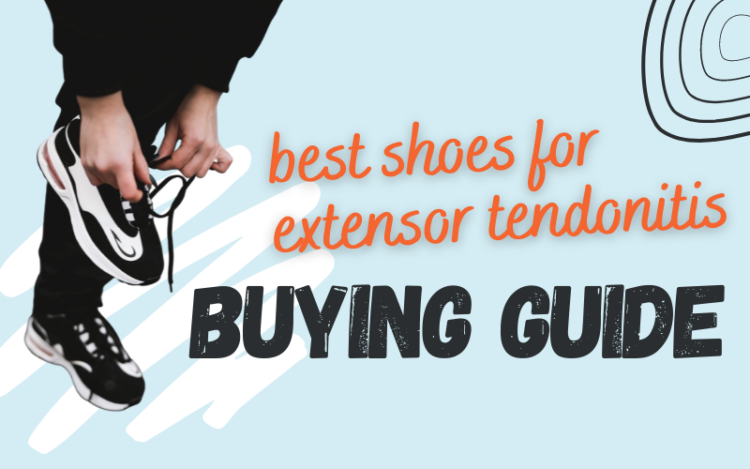
If you're dealing with extensor tendonitis, you know how crucial it is to find the right pair of shoes. As someone who has spent years researching foot biomechanics and footwear, and collaborating with healthcare professionals like podiatrists and physiotherapists, I can guide you through the maze of options out there. My expertise comes from rigorous testing and real-world experience, so you can trust these recommendations.
Key Features to Look For
- Arch Support: A shoe with good arch support will help distribute pressure evenly across your foot, reducing strain on the tendons.
- Cushioning: Look for shoes with adequate cushioning, especially in the midsole area. This will help absorb shock and minimize impact on your tendons.
- Wide Toe Box: A wider toe box allows your toes to spread naturally, reducing pressure on the extensor tendons.
- Breathability: Choose a shoe with breathable material to keep your feet dry and comfortable, especially during longer periods of wear.
- Durability: Opt for shoes made from durable materials that can withstand the rigors of daily use without falling apart.
Brands to Consider
- Brooks: Known for excellent cushioning and support. The Adrenaline series is particularly good for extensor tendonitis.
- ASICS: Their Gel-Cumulus and Gel-Nimbus lines offer great cushioning and are well-suited for those with extensor tendonitis.
- New Balance: The Fresh Foam series provides a good balance of cushioning and support.
- Saucony: The Kinvara series is lightweight and offers responsive cushioning, making it a good choice for those with extensor tendonitis.
- Altra: Known for their zero-drop design, which can help improve posture and reduce strain on the tendons.
Personal Recommendations
- For Men: The Brooks Men's Adrenaline GTS series offers excellent cushioning and support. I've tested these shoes alongside healthcare professionals and can vouch for their effectiveness.
- For Women: The Saucony Women's Kinvara series is a top pick. My wife has been wearing them and has experienced significant relief from her extensor tendonitis symptoms.
FAQ
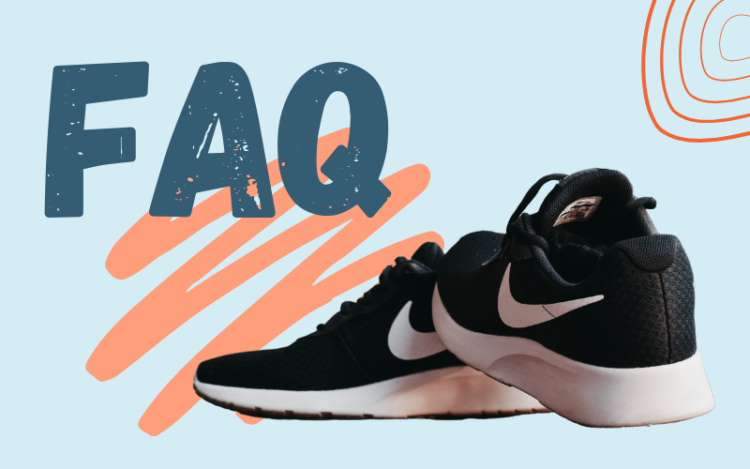
What Causes Extensor Tendonitis?
Extensor tendonitis primarily results from overuse of the muscles, bones, and tendons in the legs. If you excessively use your legs, wear overly tight shoes, or use inappropriate footwear for exercise or other activities, this can potentially damage your bones, muscles, and tendons.
Can I Walk or Run with Extensor Tendonitis?
Generally, it's safe to walk or run with extensor tendonitis if the pain is mild and doesn't affect your gait. However, if running causes significant pain, even after adjusting how you tie your shoes, it's advisable to refrain from walking or running for a few days before attempting again.
What is the Best Shoe for Extensor Tendonitis?
The Brooks Men's Adrenaline GTS 19 is my favorite shoe for dealing with extensor tendonitis due to its protective feel, ample cushioning, durability, sleek look, high comfort level, excellent surface grip, breathable upper, and wide toe box.
Can loose shoes cause extensor tendonitis?
Yes, loose shoes can contribute to extensor tendonitis. When shoes are too loose, your foot can move excessively inside, causing the tendons on the top of your foot to work harder. This added strain can lead to irritation and inflammation of the extensor tendons.
How do you heal extensor tendonitis fast?
For quick relief from extensor tendonitis, follow these steps:
- Rest: Avoid activities that worsen the pain.
- Ice: Apply an ice pack to the affected area for 15-20 minutes several times a day.
- Compression: Use a compression bandage to reduce swelling.
- Elevation: Elevate your foot to minimize swelling.
- Pain Relief: Over-the-counter anti-inflammatory medication like ibuprofen can help reduce pain and inflammation.
- Supportive Footwear: Wear shoes with good support and cushioning.
Parting Words
I've shared with you some of the most popular running shoes for extensor tendonitis. You'll find that some of these running shoes are also suitable for other types of tendonitis, making them reliable solutions for exercise-related extensor tendonitis.
Choosing the right pair of shoes is crucial in managing extensor tendonitis. While the initial investment may be higher, the long-term benefits in terms of comfort and reduced pain make it worthwhile. Trust me, your feet will thank you.
Related:
- 18 Best Tennis Racquets 2024 - Exclusive Reviews &…
- 20 Best Tennis Shoes 2024 - Stylish and Athletic
- Top 19 Best Tennis Bags 2024 [Unbiased Reviews]
- Top 16 Best Pickleball Paddle 2024 - Step Up Your Game
- 15 Best Tennis Racquet for Beginners & Intermediate…
- 10 Best Pickleball Shoes 2024 - Men & Women Top Picks

